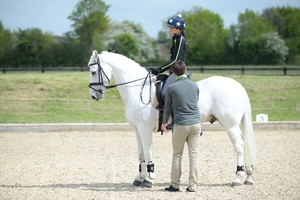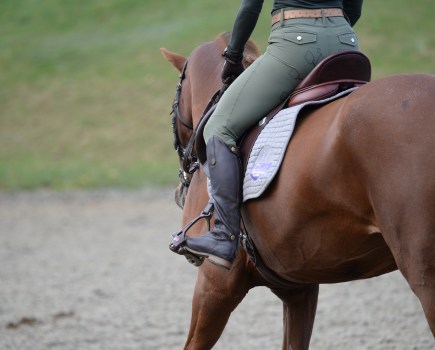A correct and balanced riding position allows your horse to move with freedom and in balance. Here with advice on how to achieve the correct riding position is biomechanics expert, Russell Guire.
Any deviation from a correct position can have a dramatic effect on your horse – just think how his skin twitches when a fly lands on him, and now think how he must feel or how he has to alter his way of going if you’re sitting badly.
To help you understand just how much influence your position can affect your horse, imagine you’ve got someone sitting on your shoulders.
If they tip their body to the left or right, you’ll also have to move in this direction to maintain your balance and not fall over and this is exactly the feeling your horse will have if you’re not sitting correctly.
It doesn’t matter whether you’re new to riding or have years of experience, you need to constantly monitor your position in the saddle and make corrections before they become a habit.
To start, let’s take a look at how you should be sitting at halt.
Riding position in halt
When you’re sitting correctly on your horse, you should:
- Have equal weight on each seat bone
- Be able to draw a vertical line from your ear, shoulder, hip and heel
- Maintain a straight line from your elbow, down your arm, along the rein to the bit
Your riding position on the move
The secret to maintaining a good position in all paces is a soft and supple seat, and allowing your pelvis to follow the movement of your horse.
As you’re walking around the arena, imagine your pelvis is a bowl full of water and your aim is to keep the water in the bowl.
For this to happen, your pelvis needs to move gently, in time with the rhythm of the walk.
Perfect position in walk
Your knees need to remain loose and think of bringing your toes up, rather than pushing weight into your heels. This will help you to stay relaxed in your leg position.
Any gripping with your thighs or knees will cause your leg to become unstable and make you feel unbalanced.
Moving onto your arms, keep your elbows soft and think about your forearms as an extension of your reins.
To help you keep your hands in the correct position and maintain that all important straight line from your elbow down the rein to the bit, forget you’ve got wrists!
Your thumbs should be on top of each rein and pointing towards your horse’s ears.









